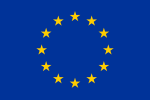Recruiting beneficiary: ISI Foundation, Italy
Internal supervisors: Dr. Daniela Paolotti, Dr. Michele Tizzoni
Brief project description: In this project, we will explore a node-embedding technique aimed at providing low-dimensional feature vectors that are informative of dynamical processes occurring over temporal networks – rather than of the network structure itself – with the goal of enabling prediction tasks related to the evolution and outcome of these processes. These embedding vectors are applicable as feature vectors in machine learning applications and yield improved performance for tasks such as node classification, link prediction, clustering, or visualization. This work will allow us to estimate temporal evolution of the entire system from sparse observations, consistently across several data sets and across a broad range of parameters of an epidemic model.
Updates: In the first project, Kausutua uses the high-resolution proximity data that have been collected in the scope of collaboration with the National Institute for Communicable Diseases of South Africa (NICD) to understand how metadata influences contact patterns specifically at the household level in developing world settings. This includes using age, gender, income, household types, roles or relationships between household members, and household head. Secondly, he would like to observe and identify the differences and similarities in contact patterns between the rural and urban sites. Finally, he would like to be able to identify the most influential household member based on the number and duration of the contacts they have with other household members.
During his currently ongoing secondment project with Prof. Mark Broom, they are looking into the interplay between evolutionary games theory and social contact networks to understand the transmission dynamics, human behaviour, and individual decision-making concerning epidemic intervention strategies such as wearing masks, social distancing, vaccination, and so forth. Evolutionary game theory in this context could provide better understanding of different strategies that individuals can adopt in response to an epidemic and intervention measures. For instance, individuals may choose to comply with preventive measures like wearing masks and practising social distancing, or they may opt for non-compliance due to various factors such as personal preferences, risk perceptions, or social influences.
Selected contributions:
Tjikundi, K. (2022, December). Quantifying and characterising face-to-face contact patterns in developing world settings [Talk]. Computer Science Department PhD Workshop, Torino, Italy.
https://comete.di.unito.it/



